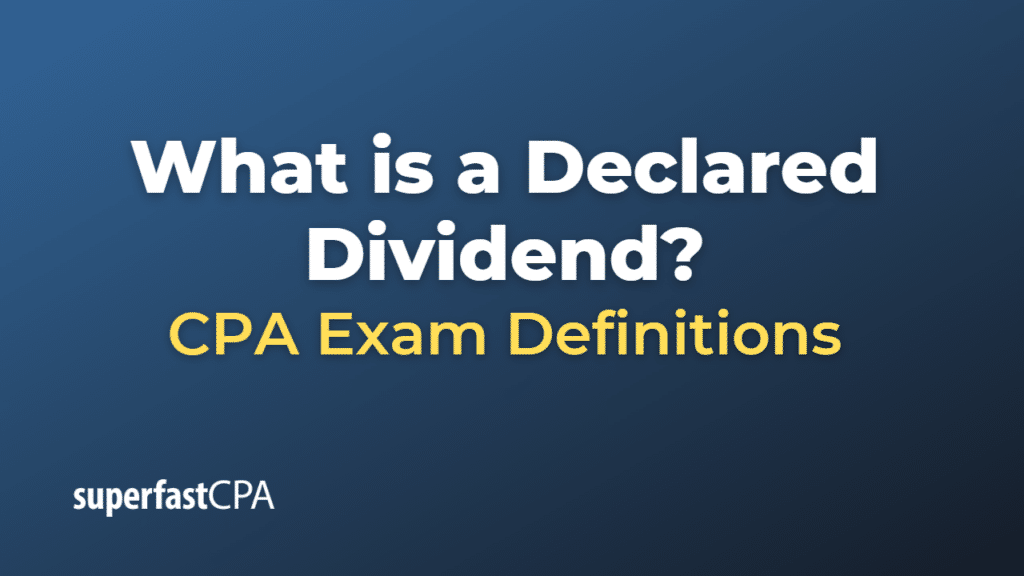Declared Dividend
A declared dividend is a dividend that has been announced by a company’s board of directors but has not yet been paid to shareholders. When a dividend is declared, the company is setting aside a portion of its profits to distribute to its shareholders. The company also announces a specific date (the payment date) on which the dividend will be paid.
In addition to the payment date, the company’s board of directors also announces:
- The amount of the dividend per share.
- The record date, which is the date by which an individual must be an official shareholder of record in order to receive the dividend.
- The ex-dividend date, which is usually one day before the record date. If you buy the stock on or after the ex-dividend date, you won’t receive the upcoming dividend.
Once a dividend is declared, the company has a legal obligation to pay it. The declared dividend is usually reported as a liability on the company’s balance sheet until it is paid.
For example, if a company declares a dividend of $1 per share, and you own 100 shares of the company’s stock, you would receive $100 (1 x 100) on the declared payment date.
Example of a Declared Dividend
Suppose XYZ Corporation has had a profitable quarter and decides to distribute a portion of these profits to its shareholders in the form of dividends. On March 1, the board of directors of XYZ Corporation declares a dividend of $0.50 per share, payable to shareholders of record as of March 15. The board also announces that the dividend will be paid on April 1.
Here’s what each of these details means:
- The declared dividend is $0.50 per share. This is the amount that each shareholder will receive for each share they own.
- The record date is March 15. This means that you must be a shareholder of record (i.e., officially listed as a shareholder) on this date to receive the dividend.
- The payment date is April 1. This is the date on which the dividend will be paid.
In this case, if you own 100 shares of XYZ Corporation on March 15, you would receive a dividend payment of $50 (0.50 x 100) on April 1.
Remember, the declaration of a dividend is a significant event because it signals a company’s financial health and profitability, and because it represents a return on investment for shareholders.













